How to teach functional routines using ABA
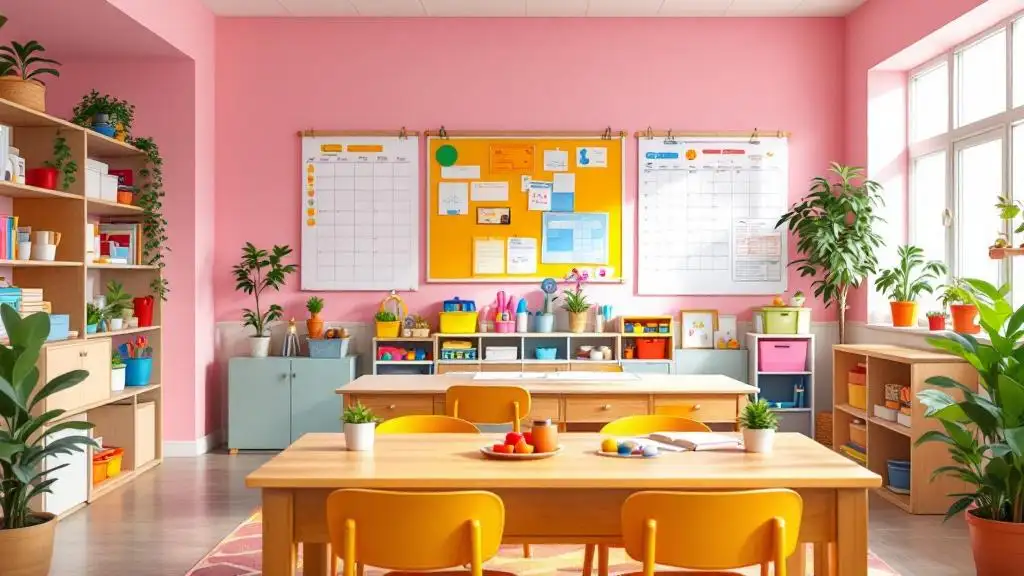
Understanding the Importance of Functional Routines in ABA Therapy
Teaching functional routines through Applied Behavior Analysis (ABA) is a cornerstone of supporting children with autism in developing independence and essential life skills. These routines enable children to navigate daily activities with confidence, reduce stress, and enhance their overall development. This article explores structured, evidence-based methods to effectively teach routines by leveraging ABA principles, tools, and collaborative strategies.
Defining Functional Routines in the Context of Autism
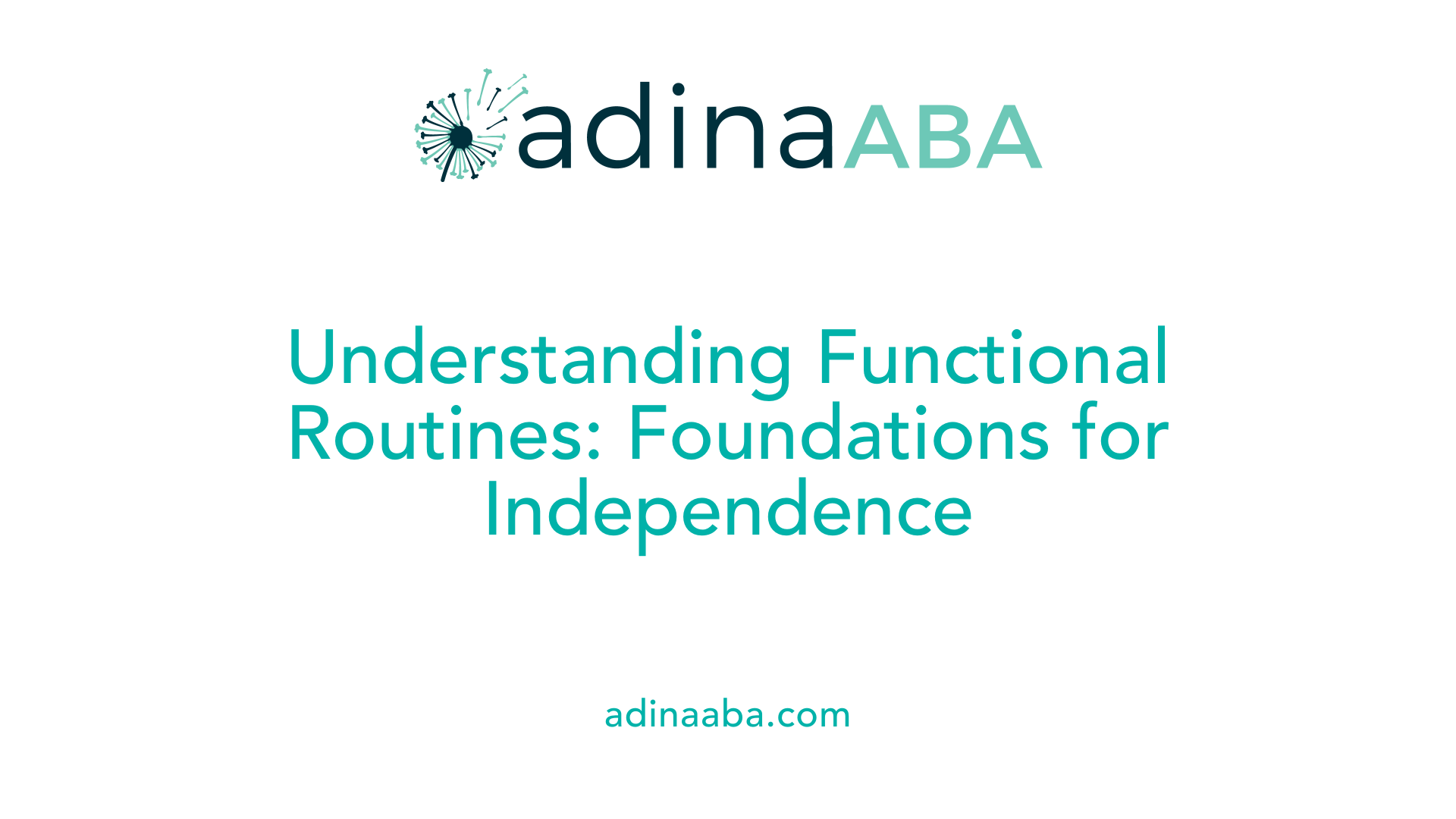
What is a functional routine for children with autism?
A functional routine for children with autism involves setting up consistent, predictable activities that foster independence and essential daily living skills. These routines are carefully designed to fit the child's individual needs, focusing on safety, participation, and gradual skill development. To support understanding, visual tools such as schedules, checklists, and social stories are often used. These visuals help children grasp the sequence of steps involved in tasks and transitions, making routines easier to follow.
Teaching routines in natural settings, like at home or in the community, helps children learn how to navigate everyday activities. Breaking tasks down into smaller, manageable parts allows for easier mastery, and practicing these routines across different environments promotes generalization of skills. Routine activities can include self-care tasks like brushing teeth or dressing, household chores, safety cues in the community, and leisure activities. By integrating these into daily life, children develop skills that enhance their independence and reduce feelings of anxiety.
In summary, functional routines are personalized to meet each child's needs and are crucial for fostering safe, meaningful participation in everyday activities. They serve as foundation blocks that support ongoing development, social engagement, and overall quality of life for children with autism.
Using ABA Principles to Effectively Teach Routines
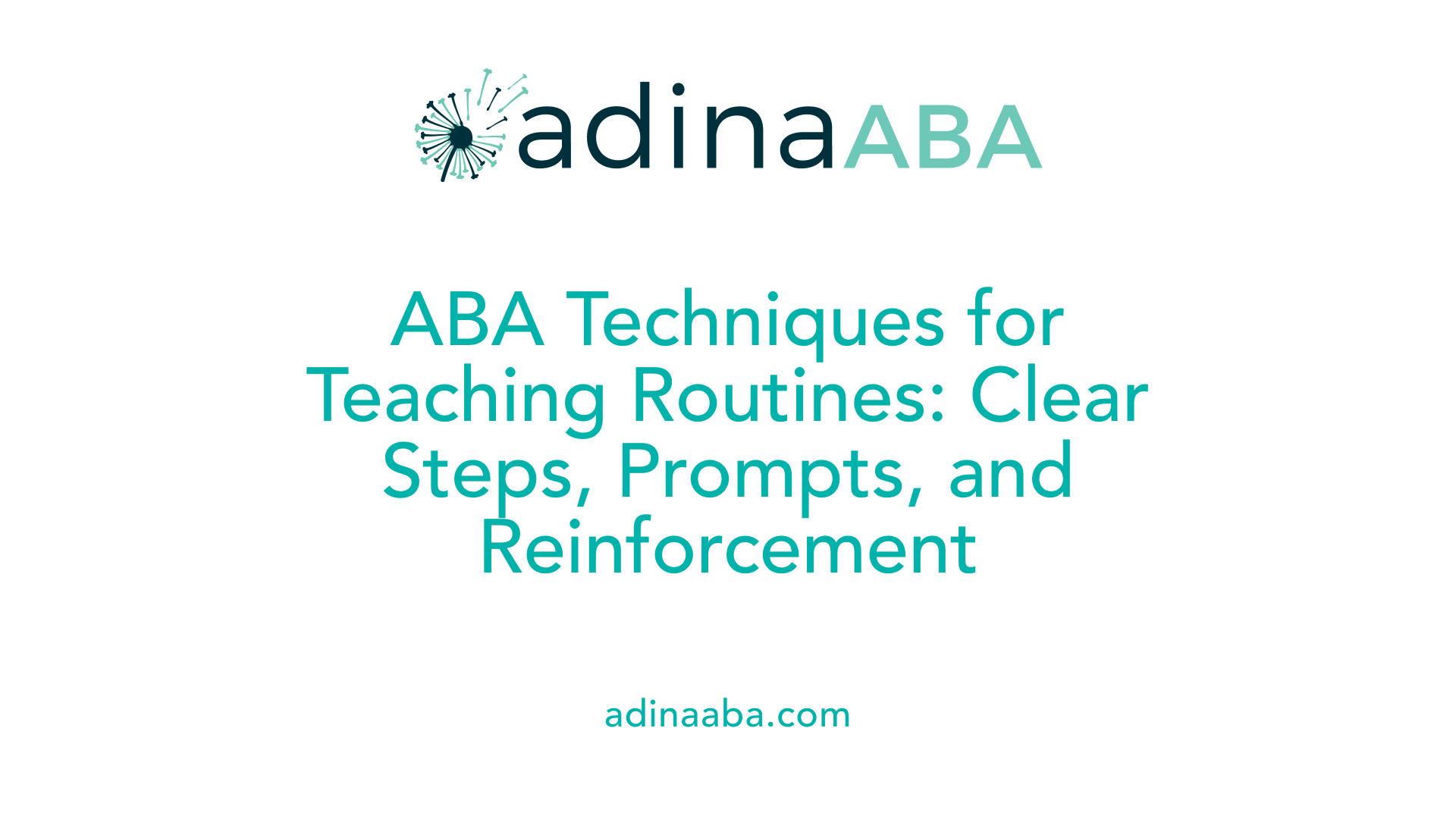
How can ABA techniques be used to teach functional routines?
ABA methods play a vital role in helping children with autism learn everyday routines by making activities clear and manageable. Teachers and caregivers break down routines, like brushing teeth or preparing for bed, into small steps using visual supports such as checklists or picture schedules. These visuals help children understand what to do next, providing predictability and reducing anxiety.
Strategic use of prompts, like modeling the correct behavior or using hand gestures, guides children through each step. Reinforcement is another core element: when a child completes a part of the routine correctly, they receive praise or a preferred item, which encourages them to continue performing the behavior independently.
Consistency is critical. Running the same routine at different times or settings helps children generalize skills, while collaboration with experienced ABA therapists ensures strategies are tailored effectively. Incorporating these techniques into everyday activities—dressing, eating, playing—makes learning natural and meaningful.
Progressively, prompts are faded as children gain independence, enabling them to perform routines confidently across various contexts. This structured yet flexible approach not only teaches functional skills but also builds confidence and promotes positive behaviors, making daily routines smoother and more manageable for children on the autism spectrum.
Implementing ABA Strategies in Daily Routines
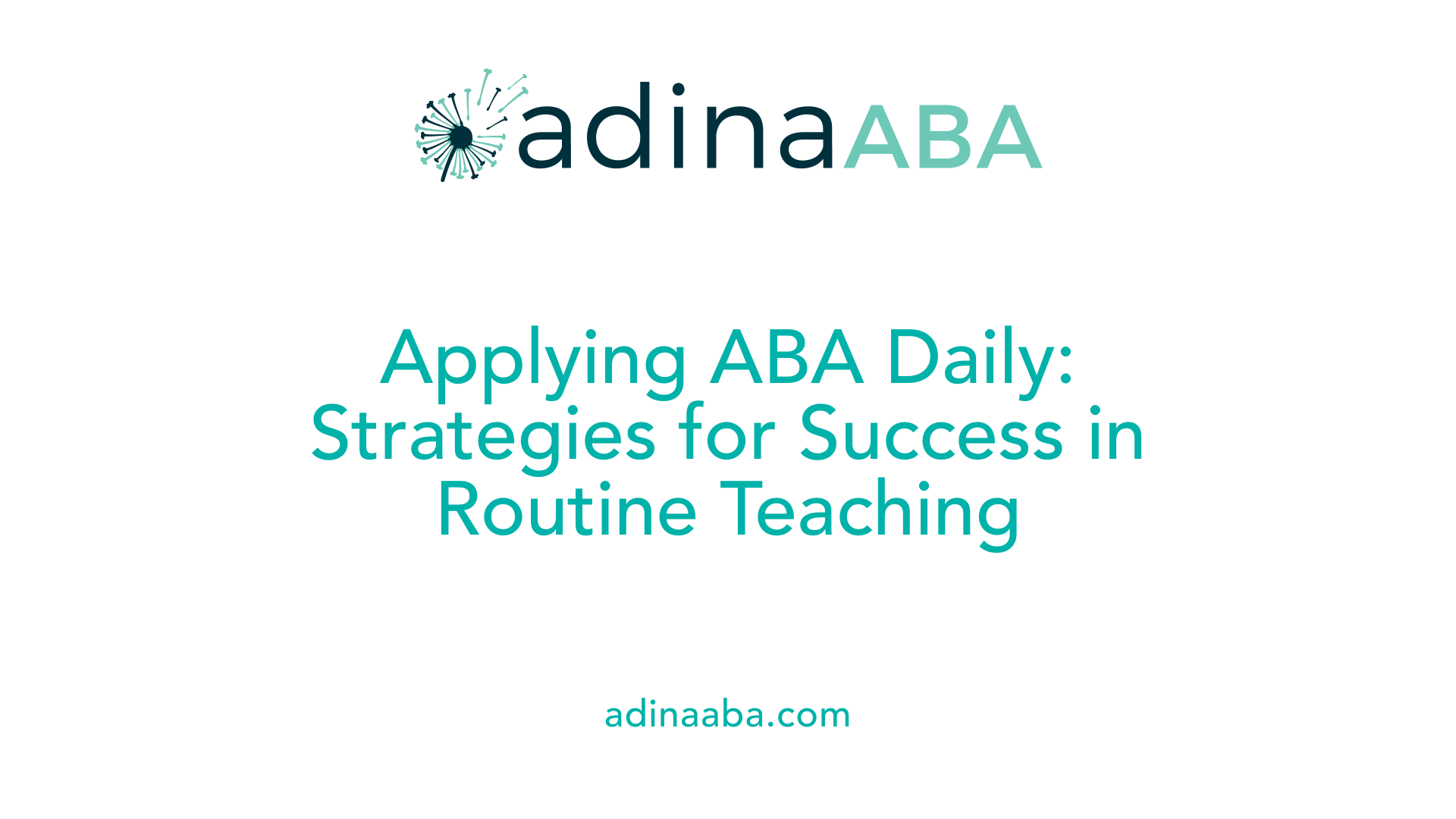
What strategies are effective for implementing ABA in daily routines?
Effective methods for applying ABA techniques to everyday activities revolve around breaking tasks into manageable steps through task analysis. This approach decomposes complex routines like dressing or brushing teeth into simple, teachable components, making independence achievable.
Using visual supports such as schedules, checklists, and timers plays a significant role in creating predictable environments. These tools help children understand what to expect, facilitate smooth transitions between activities, and reduce anxiety during routines like mealtime, bathing, or getting ready for bed.
Reinforcement is central to ABA, with prompt, consistent praise, tokens, or other rewards reinforcing positive behaviors and encouraging repetition. For example, praising a child after successfully completing a task or offering a preferred item once a step is completed motivates continued engagement.
Addressing sensory sensitivities is also crucial. ABA strategies include creating sensory-friendly environments, utilizing sensory diets, and employing desensitization techniques to help children tolerate and participate comfortably in routines.
Integrating ABA into natural routines—such as encouraging language during play, establishing effective eating habits, or practicing social interactions—promotes functional skill development and generalizes learning across settings.
Consistency across home, school, and therapy settings enhances progress. Data collection and collaboration with behavior analysts (BCBAs) ensure strategies are tailored to individual needs and adjusted based on ongoing observations.
Incorporating these methods into daily activities supports not only skill acquisition but also boosts confidence and independence for children with autism, making learning part of everyday life.
Practical Examples of Teaching Routines with ABA
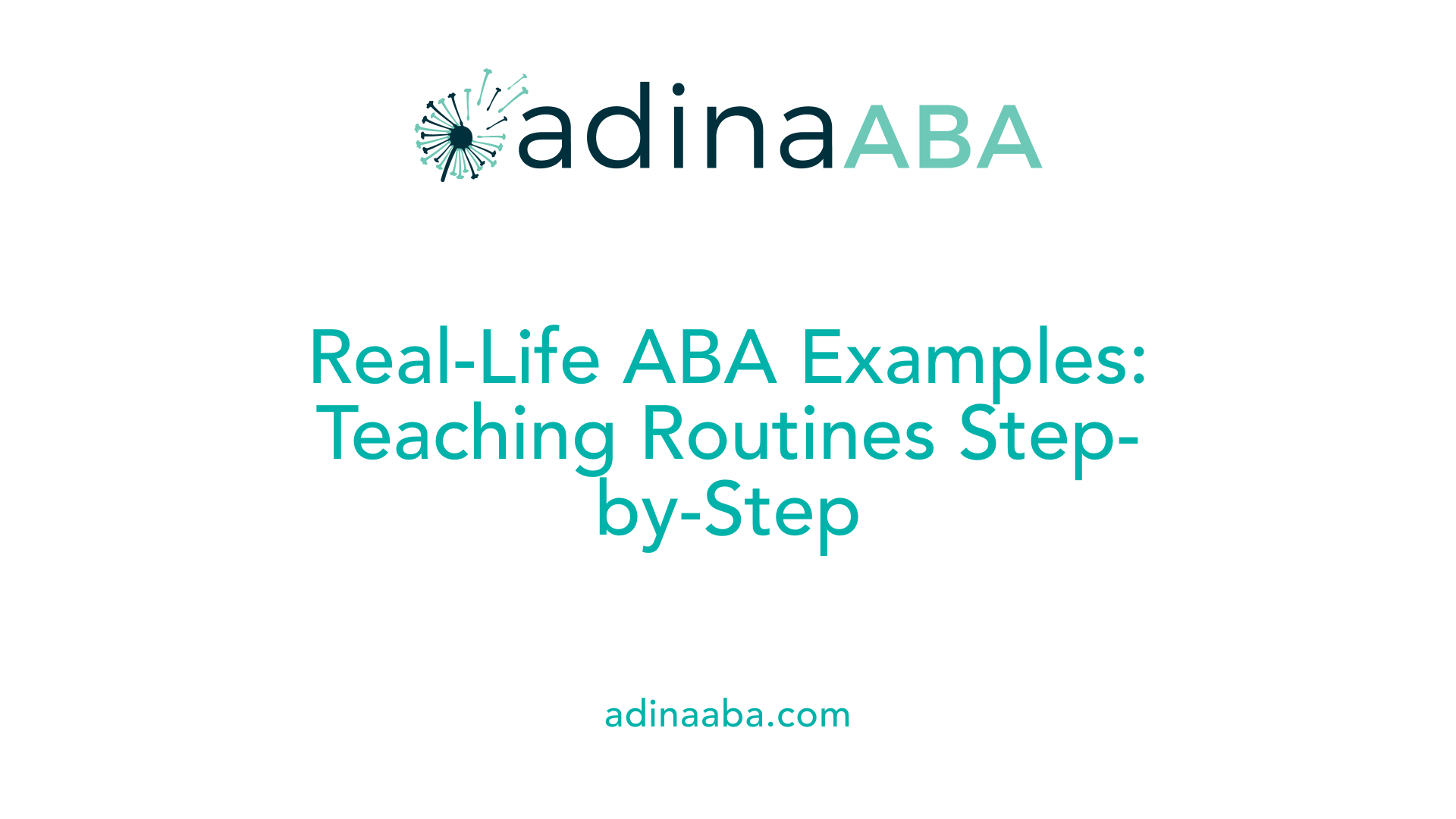
What are some practical examples of teaching routines with ABA?
Implementing ABA principles into everyday routines offers concrete ways to support children with autism in developing independence and essential skills. A common approach is to use task analysis, which breaks down complex activities into manageable steps. For example, teaching handwashing involves steps like turning on the faucet, grabbing soap, rubbing hands, rinsing, and drying. Each step is taught separately with prompts and gradually faded to promote independence.
Prompts are crucial in guiding children through routines. These can range from visual cues, physical guidance, to verbal prompts. Minimal and least intrusive prompts, such as modeling or gestures, are preferred to foster natural learning. For instance, to teach dressing, a parent might initially physically guide a child's arm into a sleeve, then gradually reduce assistance as the child gains competence.
Naturalistic teaching approaches, like incidental teaching and pivotal response training, situate learning within the child's interests and daily activities. For example, during playtime or baking, caregivers can prompt language use or social responses about the activity, reinforcing skills in real-life contexts.
Visual supports like schedules, picture checklists, and token systems help children anticipate what comes next and stay motivated. For example, a visual schedule with pictures of brushing teeth or putting on shoes prepares the child for routine transitions.
Engagement activities such as singing songs, reading stories, or matching games are integrated within routines like bedtime or mealtime, making learning fun and meaningful. Role-playing scenarios, such as pretending to shop or cook, enhance language and social skills.
When care providers work together with families using these strategies consistently, children learn to generalize skills across different settings. This holistic approach fosters greater independence during daily routines like bathing, dressing, mealtime, bedtime, and outings, ultimately supporting their development and confidence.
The Role of Routines in ABA Therapy and Skill Development
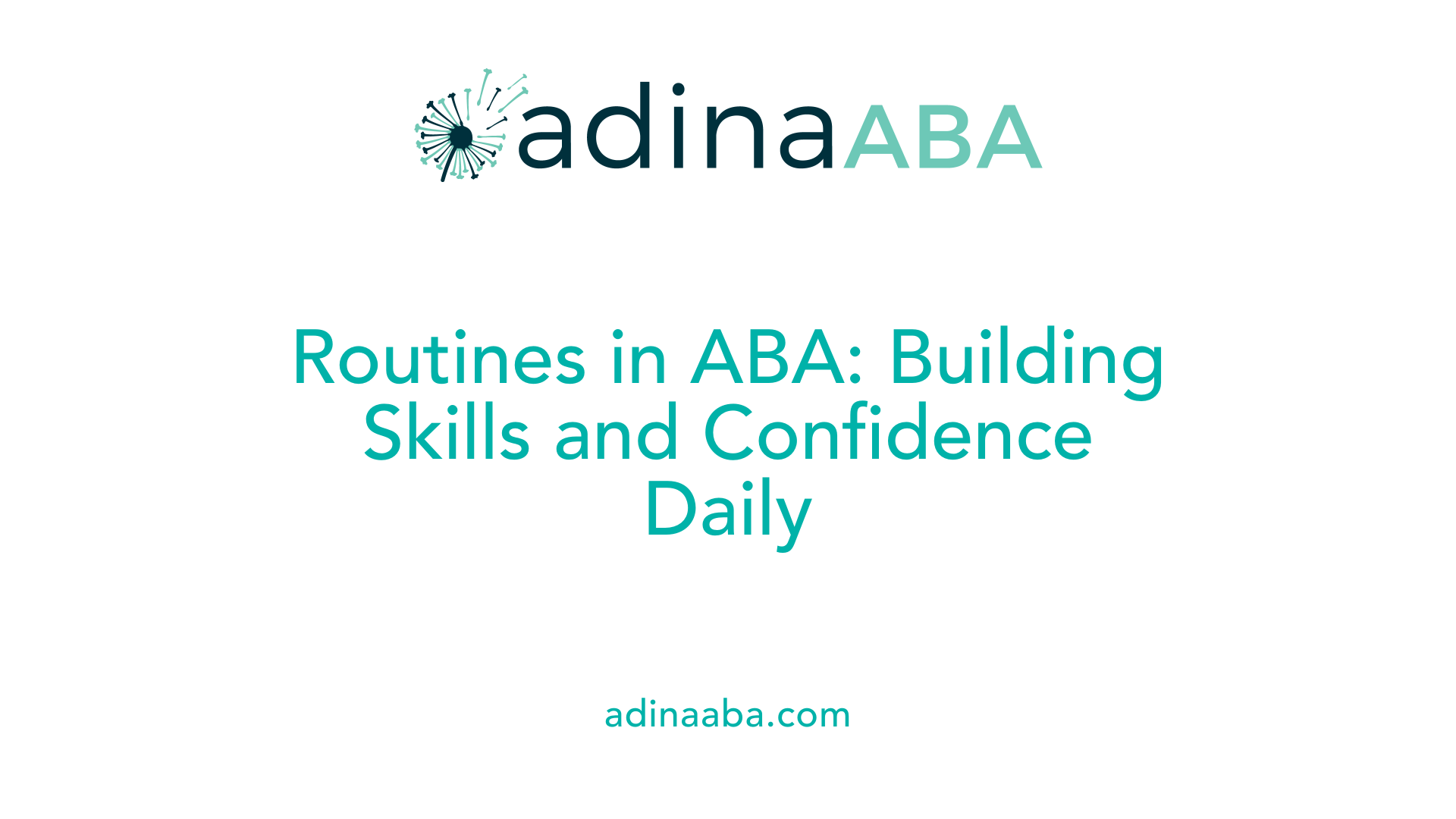
How are routines integrated within ABA therapy?
Routines are a core element of ABA (Applied Behavior Analysis) therapy, serving as a foundation for creating structured and predictable environments. For children on the autism spectrum, consistent routines help reduce anxiety by providing clear expectations and familiar activities. Visual schedules, timers, and step-by-step instructions allow children to understand what will happen next, easing transitions between activities like bathing, mealtime, or play.
In ABA therapy, routines are used to teach independence and build essential skills by breaking complex tasks into smaller, manageable steps. Data collection during routines helps therapists and caregivers monitor progress, identify challenges, and adjust strategies accordingly. Reinforcement, such as praise or tokens, is applied to motivate children and encourage the repetition of positive behaviors within these routines.
Maintaining consistency across different settings—therapy sessions, home, and school—is vital for skill generalization. At the same time, slight flexibility helps children adapt to new situations and foster resilience. Collaborating with caregivers and integrating routine-based interventions, like Family-Guided Routines-Based Intervention (FGRBI), ensures that routines are reinforced everywhere, ultimately supporting long-term development.
Overall, routines foster stability, boost confidence, and serve as effective pathways for teaching new skills, promoting emotional regulation and social interaction—cornerstones of successful ABA therapy.
Teaching Basic and Functional Routines with ABA
What are effective techniques for teaching basic and functional routines using ABA?
Teaching routines such as bathing, dressing, eating, or riding in a car requires systematic approaches grounded in ABA principles. One fundamental technique is task analysis, which involves breaking down complex routines into small, manageable steps. This helps children understand what is expected at each stage and fosters independence.
Visual supports, including picture schedules, cue cards, or visual checklists, significantly enhance understanding and predictability. These visual tools serve as visual cues that guide children through routines and reduce anxiety by providing clear expectations.
Prompting strategies are also crucial. Using least intrusive prompts such as modeling the correct response or gradually fading assistance encourages children to perform tasks independently. Reinforcement—praise, tokens, or rewards—motivates children to complete routines and promotes positive behavior.
Naturalistic teaching methods incorporate real-life situations and child interests, making routines more engaging while maximizing incidental learning opportunities. For example, practicing language during a snack routine or cleaning activities makes learning functional and relevant.
Consistency and predictability play vital roles. Establishing regular routines helps children anticipate what comes next, decreasing challenging behaviors stemming from uncertainty. Collaborating with professionals like Board Certified Behavior Analysts (BCBAs) ensures that individualized, data-driven strategies are implemented effectively.
Together, these techniques create a supportive environment where children gain valuable skills, foster independence, and learn to generalize routines across different settings. Regular practice, positive reinforcement, and tailored interventions empower children to navigate daily activities confidently.
Supporting Families and Caregivers in Teaching Routines
How can parents and caregivers be involved in ABA routines?
Parents and caregivers play a vital role in implementing ABA-based routines at home. Their involvement helps create a consistent environment that reinforces the skills learned during therapy. They can participate by using visual supports like schedules and checklists, which provide predictability and reduce anxiety for children.
During daily activities such as bathing, feeding, or dressing, caregivers can model behaviors, prompt, and reinforce efforts to follow routines. They can also engage children in fun, interactive activities such as gardening or cleaning to encourage language development and social skills.
Why is consistency important in ABA routines?
Consistency across home and therapy settings is fundamental in ABA. When routines are followed consistently, children understand expectations better, which helps in generalizing skills across different contexts. Using visual aids, such as picture schedules or token boards, and practicing routines repeatedly ensures children develop independence.
Moreover, consistent routines provide a sense of security and predictability, reducing anxiety and encouraging positive behaviors. Reinforcing completed tasks with praise or tokens motivates children and strengthens learning.
How does collaboration enhance routine implementation?
Effective collaboration among parents, caregivers, and ABA therapists ensures routines are tailored to the child's needs. Regular feedback from therapists helps caregivers adjust strategies and maintain fidelity in applying procedures.
Family-guided routines based interventions (FGRBI) specifically emphasize consistent involvement of all family members and service providers, which supports skill development across daily activities.
Caregivers trained in data collection can monitor progress, identify areas needing adjustment, and celebrate small successes. This teamwork creates a seamless support system that promotes meaningful behavior change and skill acquisition.
What strategies support successful routine teaching?
Teaching routines involves pre-teaching activities, practicing with minimal prompts, and ensuring skills are generalized to different settings. Using task analysis, visual supports, and simulations makes learning easier and more engaging.
Data collection is essential for tracking progress and determining the effectiveness of routines. Incorporating ABA strategies like reinforcement, modeling, and prompting during routines enhances learning outcomes.
In summary, active involvement, consistent application, and collaboration are pivotal in helping children with autism develop independence and social skills through daily routines.
Fostering Skill Generalization and Maintenance
How does ABA support skill transfer across different settings?
ABA therapy emphasizes teaching skills in a variety of environments to promote generalization. Practicing routines in different locations, such as at home, in the community, or in school, helps children apply what they learn broadly. Visual schedules, prompts, and reinforcement are adapted to suit each setting, ensuring consistency.
What is natural environment teaching in ABA?
Natural environment teaching involves using everyday activities and surroundings as opportunities for learning. For example, during playtime or outdoor activities, therapists or caregivers embed teaching moments for communication, social skills, or daily living tasks. This approach makes learning contextually relevant and more engaging for children.
How are prompts faded in ABA routines?
Fading prompts gradually reduces assistance as the child gains independence. Initially, prompts might be physical guidance or verbal cues. Over time, these are slowly withdrawn, encouraging the child to perform skills independently. The goal is for children to transfer skills without constant prompting.
What role does reinforcement play in maintaining skills?
Consistent reinforcement strengthens learned behaviors and supports maintenance over time. Rewards like praise, tokens, or preferred activities are used immediately after successful attempts. This positive feedback motivates children to retain and apply their skills across different routines and settings.
How does combining these strategies improve life skills?
Integrating these methods—generalization across settings, natural environment teaching, prompt fading, and reinforcement—creates a comprehensive approach. This blend promotes lasting skill development, independence, and confidence in everyday routines, ensuring children can navigate various life situations effectively.
| Strategy | Focus Area | Implementation Example | Benefits |
|---|---|---|---|
| Generalization Techniques | Transferring skills across various environments | Practicing using visual schedules at home, school, and community | Builds adaptable, functional skills |
| Natural Environment Teaching | Embedding learning in daily activities | Teaching requesting during snack time or play | Enhances relevance and motivation |
| Prompt Fading | Increasing independence through reduced assistance | Gradually removing physical prompts when teaching dressing skills | Promotes lasting independence |
| Reinforcement | Maintaining and strengthening behaviors | Giving praise or tokens after successful routines | Encourages ongoing skill use |
Creating Engaging and Motivating Learning Experiences
Incorporating Fun Activities
In ABA therapy, making routines enjoyable is essential for encouraging active participation and fostering learning. Engaging activities like gardening, cleaning, or playing with toys turn everyday tasks into opportunities for skill-building. These fun interactions not only boost motivation but also promote language development, where children learn to label objects or verbalize actions.
Using Social Skills Games
Interactive games designed around social skills are effective tools in ABA therapy. These activities help children practice communication, turn-taking, and social interactions in a playful setting. For example, social skills games might involve role-playing or group challenges that reinforce positive behaviors like sharing or asking politely.
Reinforcing with Rewards
Positive reinforcement is a cornerstone of ABA, used to motivate children during routines and activities. Rewards like praise, tokens, or stickers reinforce desired behaviors, making children more likely to repeat actions that lead to positive outcomes. During routines such as bedtime or meal times, offering rewards for cooperation or independent task completion can significantly improve engagement.
By integrating these elements—fun activities, social skill games, and rewarding systems—parents and therapists create a supportive environment that encourages consistent practice and enjoyment in learning. This approach helps children build critical communication, social, and daily living skills while feeling motivated and confident in their abilities.
Ensuring Safety and Comfort During Routine Teaching
How can environmental modifications improve safety in ABA routines?
Creating a safe environment is essential when teaching routines through ABA therapy. This involves removing hazards, using soft padding for sharp edges, and securing furniture to prevent accidents. Ensuring there is enough space to move freely reduces the risk of injury.
What strategies are used to manage sensory sensitivities?
Children with autism often experience sensory sensitivities that can impact their comfort during routines. ABA uses desensitization techniques, sensory diets, and environmental modifications to help children regulate their sensory input. For example, providing noise-canceling headphones or soft lighting can create a calming space.
How can caregivers support children during routines?
Caregiver involvement is vital for safety and success. Training caregivers on proper use of visual supports and prompts enhances consistency. Observing signs of distress allows caregivers to adjust the environment or routine, ensuring the child remains comfortable.
What role does collaboration play in safety?
Working closely with ABA therapists to develop tailored routines and safety protocols helps adapt strategies to each child's needs. Regular feedback from professionals ensures the environment remains safe and supportive.
How do environmental and sensory modifications promote effective ABA therapy?
By reducing anxiety and avoiding overstimulation, these modifications help children focus and participate fully in routines. This approach supports learning, independence, and emotional well-being.
| Aspect | Approach | Purpose |
|---|---|---|
| Environmental modifications | Hazard removal, securing furniture, padding | Prevent accidents, create a secure space |
| Sensory management | Desensitization, sensory diets, noise control | Reduce overload, enhance comfort |
| Caregiver support | Training, observation, responsive adjustments | Promote safety, increase routine participation |
Supporting routines with appropriate modifications ensures children with autism can learn effectively while feeling safe and comfortable. Collaboration among caregivers and professionals plays a crucial role in maintaining a secure environment conducive to meaningful behavior change.
Summary and Practical Takeaways for Effective Routine Teaching
Teaching functional routines using ABA is a comprehensive process that integrates evidence-based strategies, visual supports, reinforcement, and collaboration. By systematically breaking down activities, implementing consistent routines, and adapting environments, children with autism can develop independence, reduce anxiety, and achieve meaningful skill gains. The key to success lies in tailoring approaches to each child's needs, involving families and professionals, and maintaining data-driven practices. These methods not only foster essential life skills but also promote confidence and positive engagement in everyday activities.
References
- How ABA Therapy Builds Consistency for Lasting Success
- (FUN)ctional Routines - The Autism Helper
- Using ABA in Everyday Routines to Help Develop Skills - Rethink Ed
- How to Teach 1-Step Instructions Using ABA
- Incorporating ABA Therapy Activities into Daily Routines at Home
- 5 ABA Therapy Tips for Your Daily Routine - My World ABA
- Using ABA in Everyday Routines to Help Develop Skills - Rethink Ed
- Autism Routines: Build a Structured Daily Schedule for Success
- Integrating ABA Techniques into Daily Routines: A Guide for Parents
- How to Teach Students to Use Visual Schedules - How to ABA
More Resources
Expert Clinicians
Get started today ->



.jpg)
.jpg)

